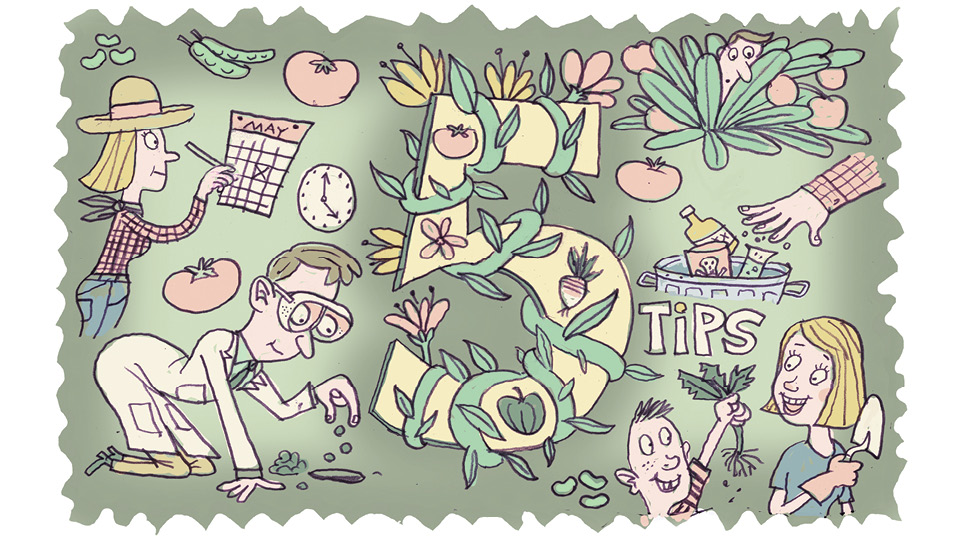by Jess Canose ’13
Plan in advance
Farmers use the winter to plan out their growing seasons. Gardeners can also learn their frost-free dates and other milestones in the growing season to understand what to plant and when. Get your soil tested and start plants indoors in early spring to get a jump on your first planting.
Experiment
When choosing what to plant, experiment with new varieties, not just what’s available at Home Depot. I buy seeds from Johnny’s Selected Seeds, which sends out a beautiful printed catalog each winter. Fedco, Southern Exposure, Seed Saver’s Exchange and Territorial are also great seed providers. Overwhelmed by the choices? Start with America’s Choice and heirloom varieties.
Leave more space than you think you will need
Plants look small when you first put them in the ground, but be wary: They will expand and take up much more space (zucchini plants especially)! Follow the spacing guidelines on the back of the seed packet and use a measuring tape.
Do not use chemical fertilizers like Miracle-Gro
Don’t add more chemicals to our soil, waters and bodies! Your plants will grow beautifully without them. Look for local compost and safe fertilizers like Neptune’s Harvest fish emulsion. There will be imperfections — but embrace that bug-bitten chard! Studies show that plants under stress release antioxidants...which you’ll then consume!
Share the work, share the bounty
Weeding and other gardening tasks can easily become overwhelming if you don’t stay on top of them. Weed regularly and divide tasks among family members, friends and community members and reward them by sharing your extra produce.
Jess Canose ’13 is a graduate fellow in the food studies program at Chatham University. She works for 412 Food Rescue, a food-waste nonprofit in Pittsburgh, Pa., and recently hosted a conference about food and climate change. At Rider, Canose earned a bachelor’s in Spanish with dual minors in Latin American and Caribbean areas studies and sustainability studies.

